The Top Ten Pavilions to See in Venice
----------------------------
As tempted as one may be to see every national pavilion at the 2022 Venice Biennale, whether this be virtual or in the flesh, the chances of covering the Arsenale, Giardini and fringe spaces are reasonably slim. To help with narrowing down your list of must-see shows, we have enlisted the guidance of art advisor, Alexia Walker who recently returned home to Johannesburg after attending a white hot launch week in Venice.
Alexia Walker grew up in Paris and holds a Master in contemporary art history from Université de La Sorbonne. Now based in Johannesburg, Alexia leads her art advisory Walker Art to help collectors build their collections. She has modern and contemporary art expertise with a special focus on Africa. Prior to establishing Walker Art, Alexia co-founded the art advisory Walker Scott and the art management start-up Capital Art.
Here are Alexia's top 10 Pavilions to visit at this year's Venice Biennale:
United States Of America
Simone Leigh: Sovereignty
Curator: Eva Respini, Institute of Contemporary Art/Boston
Venue: Giardini
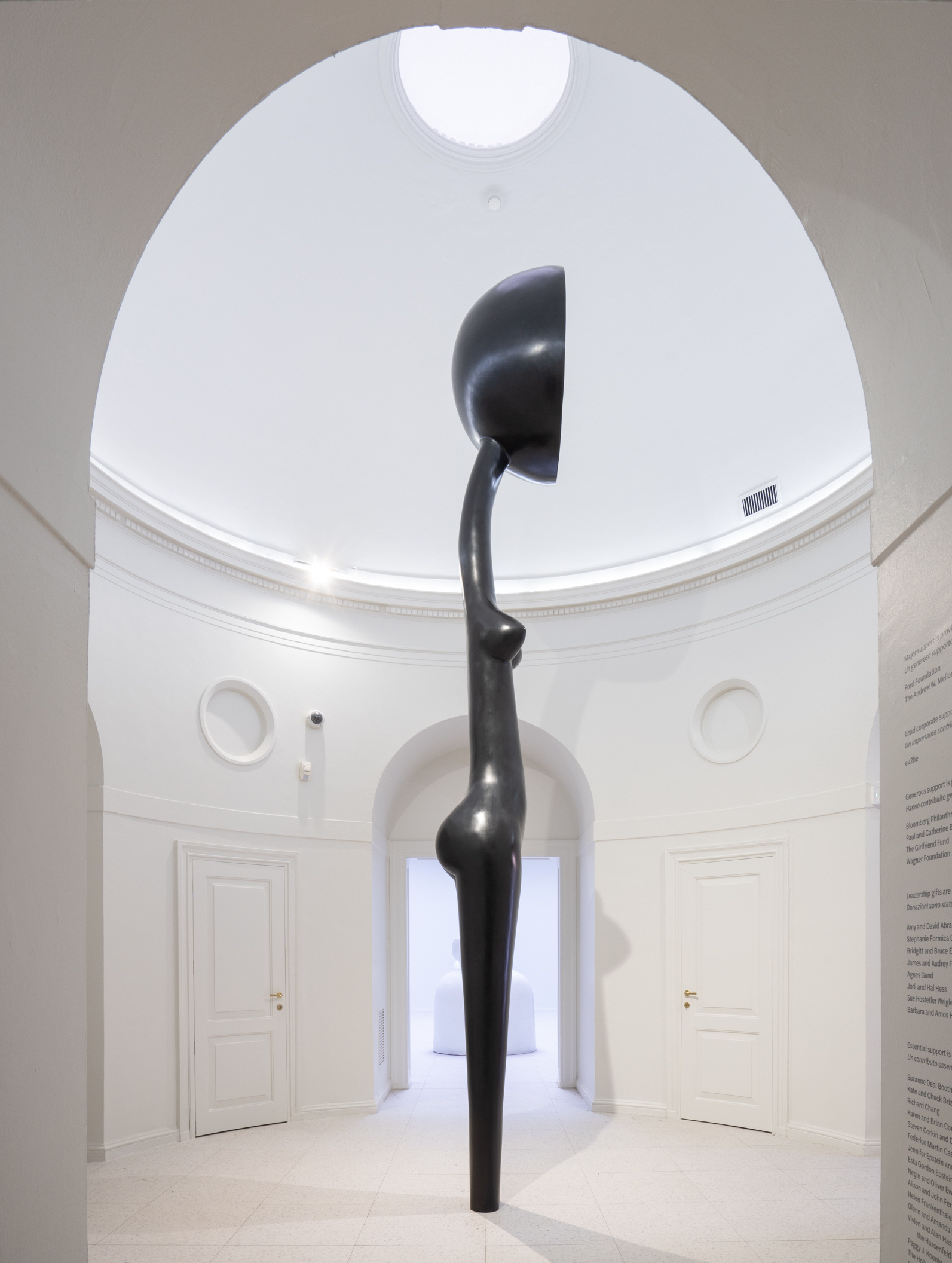 Pavilion of UNITED STATE OF AMERICA, Simone Leigh: Sovereignty, 59th International Art Exhibition – La Biennale di Venezia, The Milk of Dreams, Photo by: Marco Cappelletti, Courtesy: La Biennale di Venezia
Pavilion of UNITED STATE OF AMERICA, Simone Leigh: Sovereignty, 59th International Art Exhibition – La Biennale di Venezia, The Milk of Dreams, Photo by: Marco Cappelletti, Courtesy: La Biennale di Venezia
Simone Leigh's "Sovereignty" is characterised by an interest in performativity and affect. Leigh’s expansive practice parses the construction of Black femme subjectivity. Her large-scale sculptural works join forms derived from vernacular architecture and the female body, rendering them via materials and processes associated with the artistic traditions of Africa and the African diaspora.
"Sovereignty" commingles disparate histories and narratives, including those related to ritual performances of the Baga peoples in Guinea, early Black American material culture from the Edgefield District in South Carolina, and the landmark 1931 Paris Colonial Exposition. With a series of new bronzes and ceramics both outside and inside the Pavilion, Leigh intervenes imaginatively to fill gaps in the historical record by proposing new hybridities.
To learn more visit the USA Pavilion.

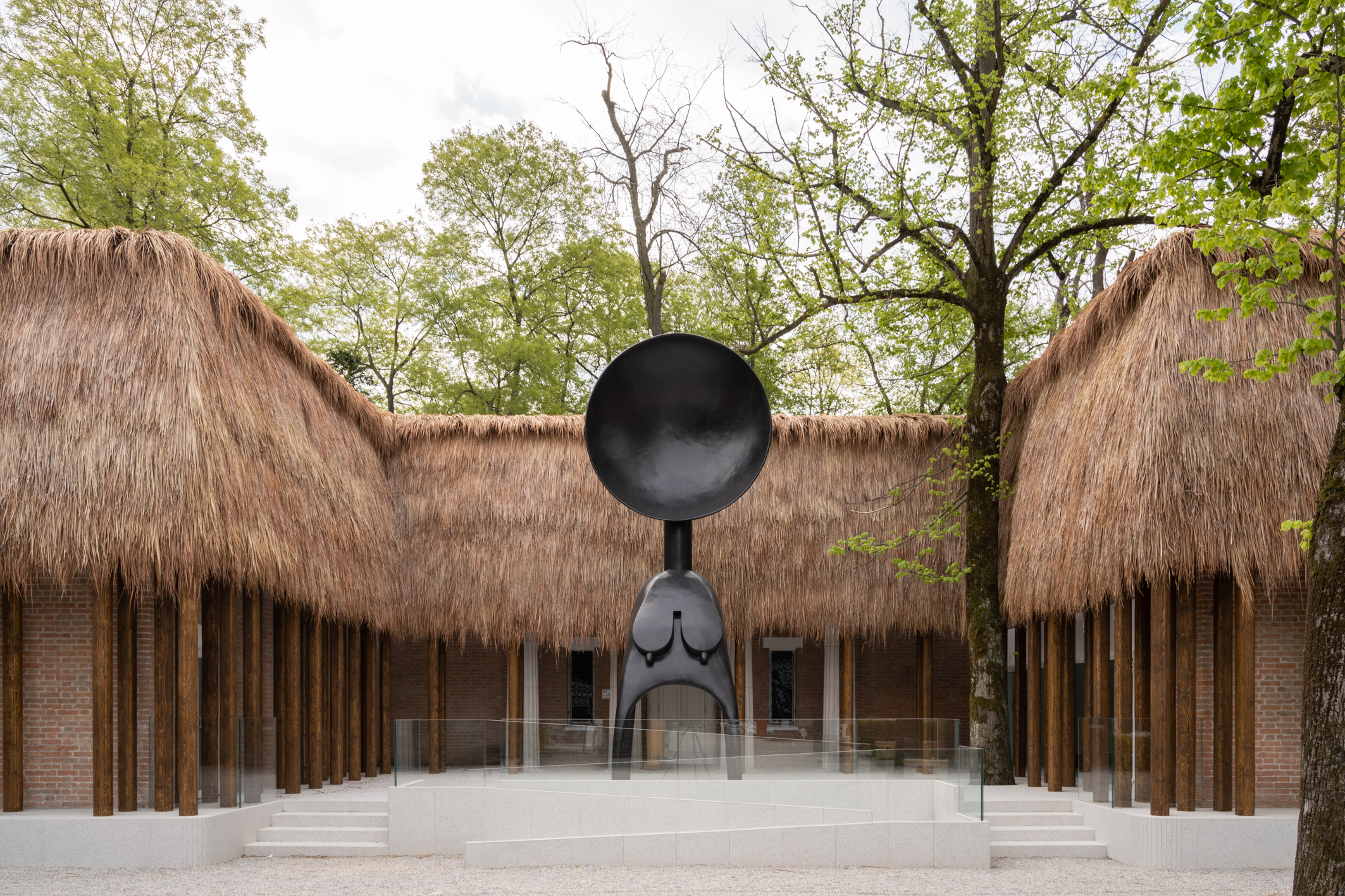

Pavilion of UNITED STATE OF AMERICA, Simone Leigh: Sovereignty, 59th International Art Exhibition – La Biennale di Venezia, The Milk of Dreams, Photo by: Marco Cappelletti, Courtesy: La Biennale di Venezia
France
Les rêves n’ont pas de titre / Dreams have no titles
Curators: Yasmina Reggad, Sam Bardaouil and Till Fellrath
Exhibitor: Zineb Sedira
Venue: Giardini
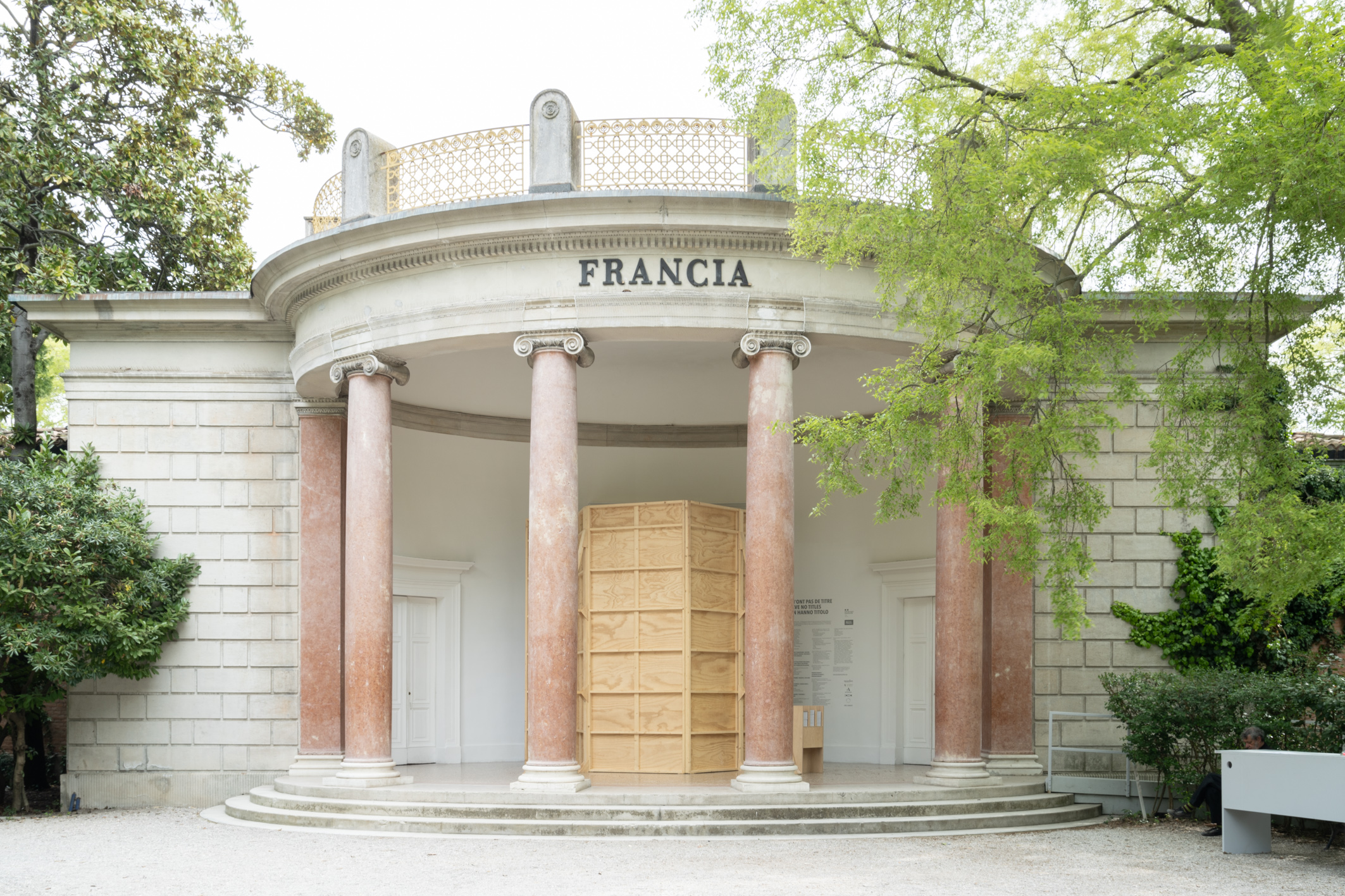 Pavilion of FRANCE, Les rêves n’ont pas de titre / Dreams have no titles, 59th International Art Exhibition - La Biennale di Venezia, The Milk of Dreams, Photo by: Marco Cappelletti, Courtesy: La Biennale di Venezia
Pavilion of FRANCE, Les rêves n’ont pas de titre / Dreams have no titles, 59th International Art Exhibition - La Biennale di Venezia, The Milk of Dreams, Photo by: Marco Cappelletti, Courtesy: La Biennale di Venezia
The French Pavilion presents Zineb Sedira’s multidisciplinary exhibition, an immersive installation consisting of film, sculpture, photography, sound and collage. In line with her practice to date, Sedira uses autobiographical narrative, fiction and documentary to shed light on past and present international solidarities related to historical liberation struggles. Her contribution serves as a cautionary tale about the failure of an emancipatory promise which, for many people, remains an unfulfilled, not to say an impossible dream.
In “Dreams Have No Titles”, the artist addresses a major turning point in the history of cultural, intellectual and avant-garde production of the 1960s, 1970s and beyond, in France, Italy and Algeria especially. She focuses on a repertoire of remarkable cinematographic co- productions and filmmaking, in particular activist ones, which had an impact on postcolonial movements.
During several visits to the archives of the Algerian Cinémathèque, she continued to mine the country’s incredible film heritage, which hardly ever gets a mention in the history of the cinematographic avant-gardes. Post- independence cinema in France, Italy and Algeria adhered to the so-called “Third-World” values and aesthetics, which amounted to a true revolution on the big screen. Throughout her life, Zineb Sedira felt close to this militant and anti-colonial movement inspired by the Cuban model, showing a political courage that she considers to be an important manifestation of solidarity at that time, and which she hopes to reactivate today.
To learn more visit the French Pavilion.
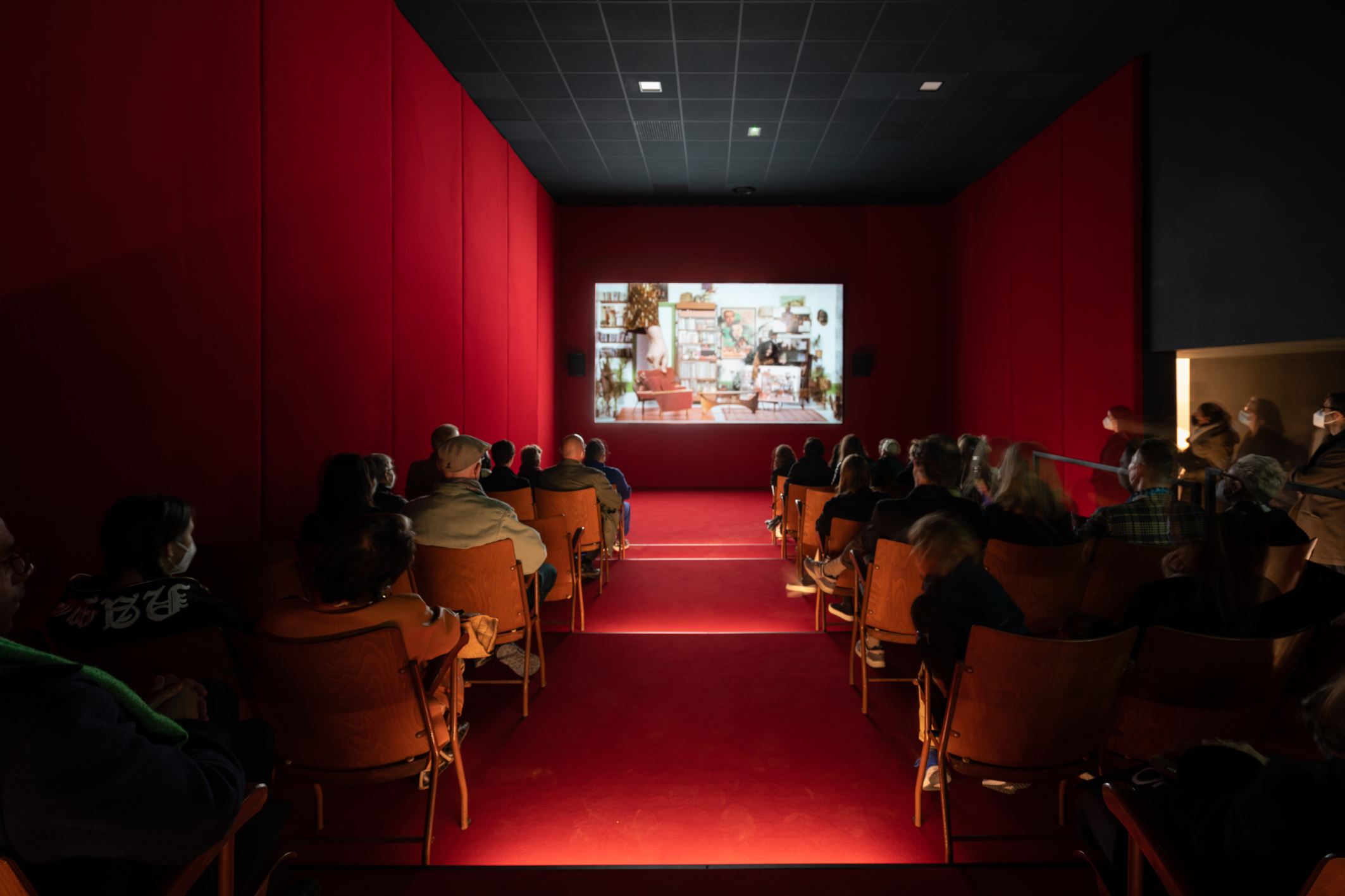
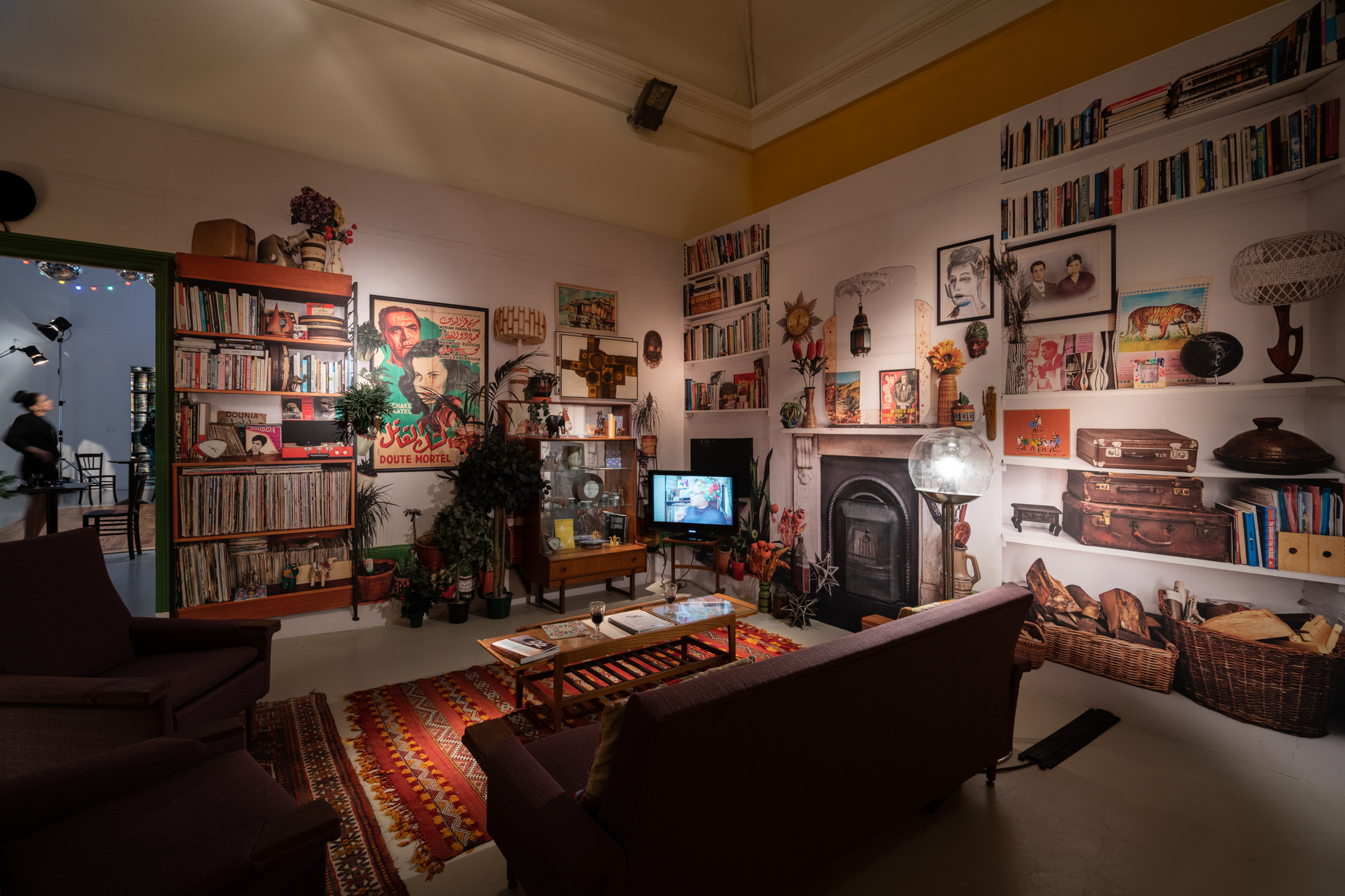
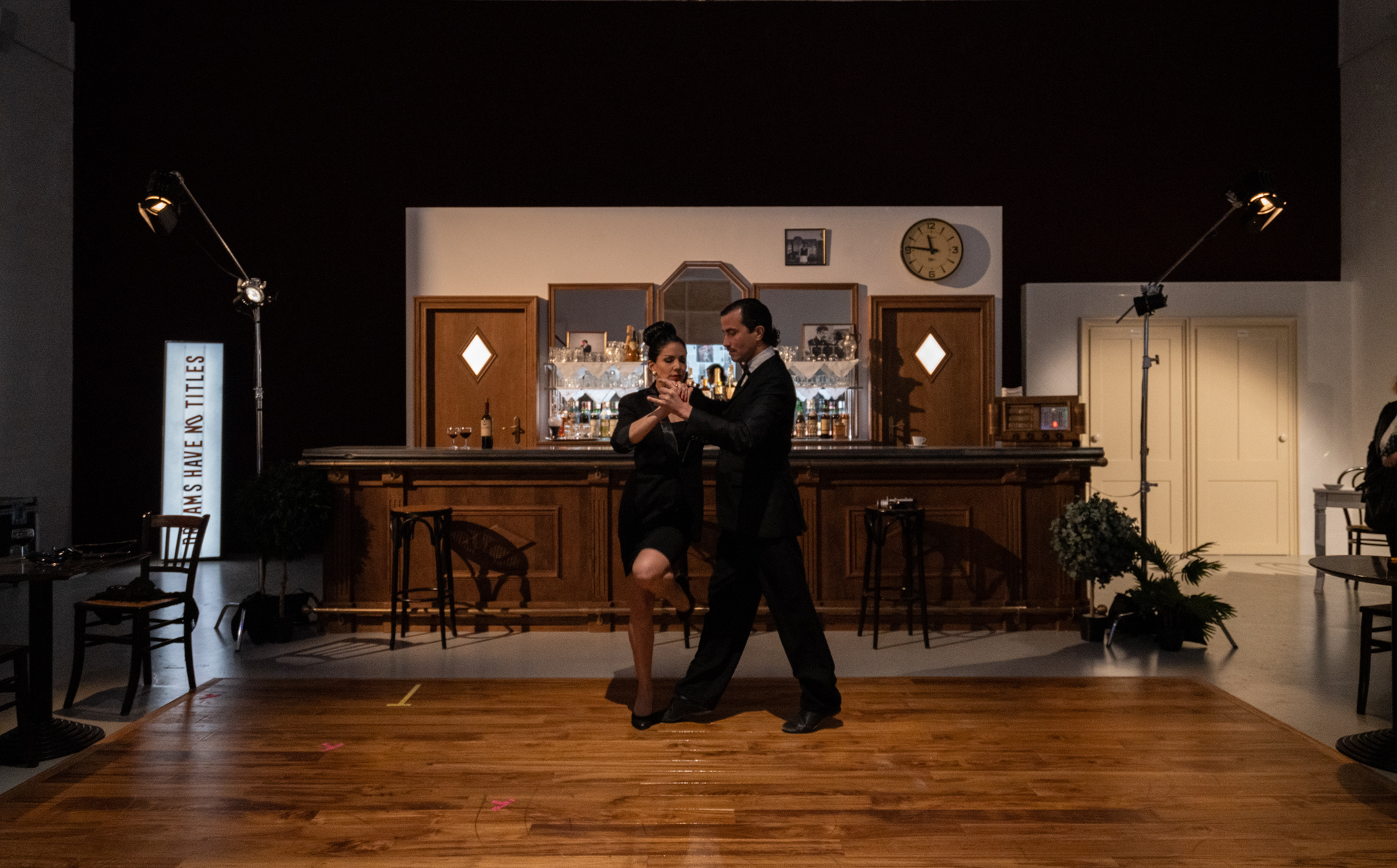
Pavilion of FRANCE, Les rêves n’ont pas de titre / Dreams have no titles, 59th International Art Exhibition - La Biennale di Venezia, The Milk of Dreams, Photo by: Marco Cappelletti, Courtesy: La Biennale di Venezia
Great Britain
Sonia Boyce: Feeling Her Way
Curator: Emma Ridgway
Exhibitor: Sonia Boyce
Venue: Giardini
 Pavilion of GREAT BRITAIN, Sonia Boyce: Feeling Her Way, 59th International Art Exhibition - La Biennale di Venezia, The Milk of Dreams, Photo: Marco Cappelletti. Courtesy: La Biennale di Venezia
Pavilion of GREAT BRITAIN, Sonia Boyce: Feeling Her Way, 59th International Art Exhibition - La Biennale di Venezia, The Milk of Dreams, Photo: Marco Cappelletti. Courtesy: La Biennale di Venezia
British artist Sonia Boyce’s powerful exhibition explores the potential of collaborative play as a route to innovation. Boyce’s installation brings together video works featuring five Black* female musicians (Poppy Ajudha, Jacqui Dankworth MBE, Sofia Jernberg, Tanita Tikaram and composer Errollyn Wallen CBE) who were invited to improvise, interact and play with their voices.
The video works take centre stage among Boyce’s signature tessellating wallpapers and golden geometric structures, and the Pavilion’s rooms are filled with sounds – sometimes harmonious, sometimes clashing – embodying feelings of freedom, power and vulnerability. This new commission expands on Boyce’s Devotional Collection, built over more than two decades and spanning more than three centuries, which honours the substantial contribution of Black British female musicians to transnational culture.
To learn more visit the British Pavilion.
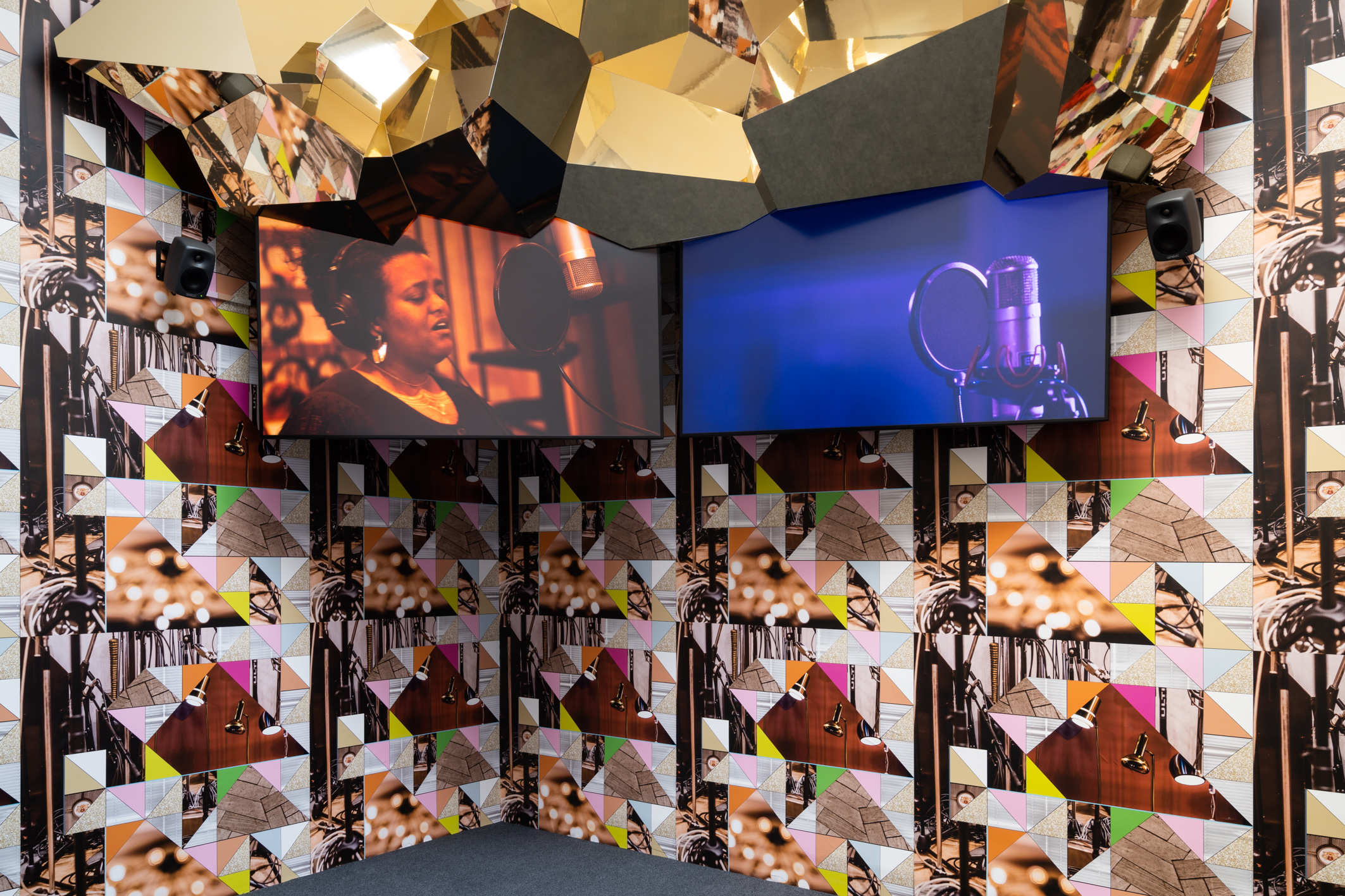 Pavilion of GREAT BRITAIN, Sonia Boyce: Feeling Her Way, 59th International Art Exhibition - La Biennale di Venezia, The Milk of Dreams, Photo: Marco Cappelletti. Courtesy: La Biennale di Venezia
Pavilion of GREAT BRITAIN, Sonia Boyce: Feeling Her Way, 59th International Art Exhibition - La Biennale di Venezia, The Milk of Dreams, Photo: Marco Cappelletti. Courtesy: La Biennale di Venezia
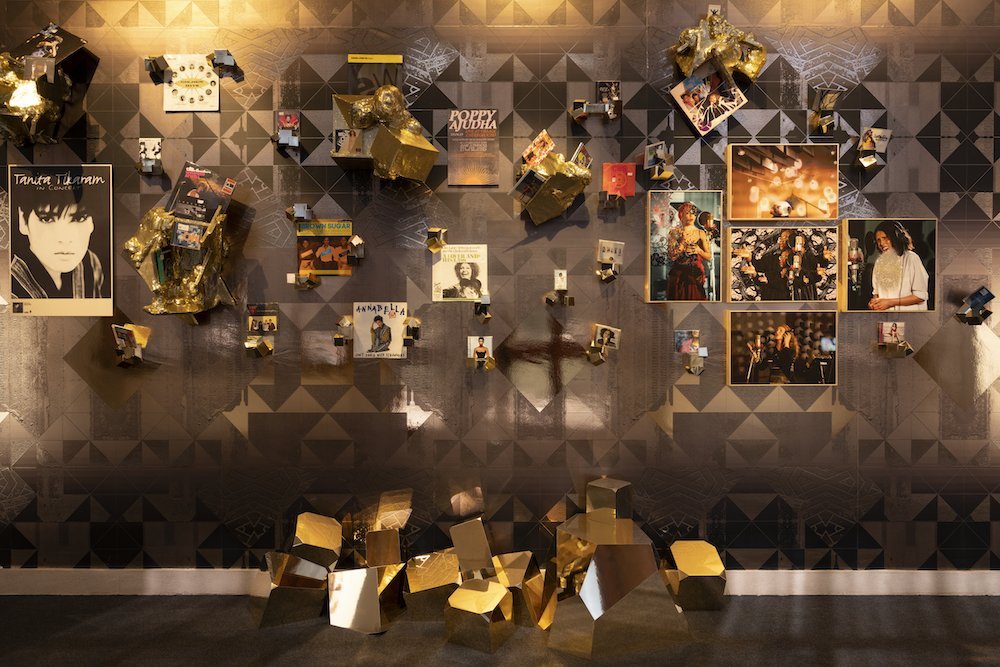 Sonia Boyce, “Feeling Her Way”, 2022. Installation view of the British Pavilion at 59th Venice Biennale. Photo by Cristiano Corte © British Council.
Sonia Boyce, “Feeling Her Way”, 2022. Installation view of the British Pavilion at 59th Venice Biennale. Photo by Cristiano Corte © British Council.
Poland
Re-enchanting the World
Curators: Wojciech Szymański and Joanna Warsza
Exhibitor: Małgorzata Mirga-Tas
Venue: Giardini
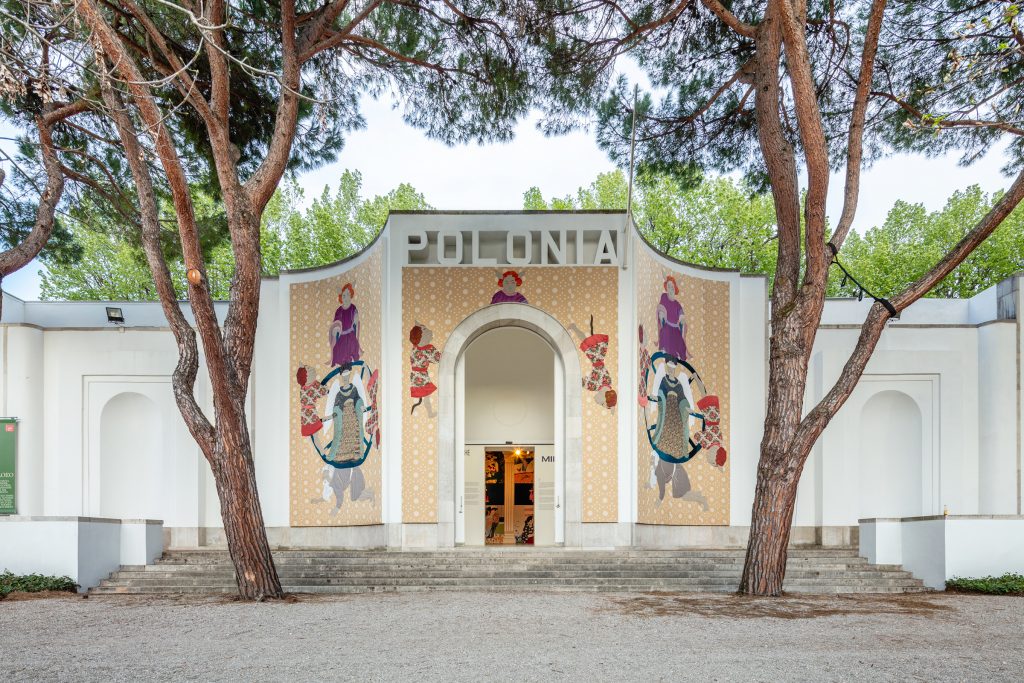 Małgorzata Mirga-Tas, Re-enchanting the World, exhibition view, Polish Pavilion at the Biennale Arte 2022. Photo: Daniel Rumiancew. Images courtesy Zachęta — National Gallery of Art
Małgorzata Mirga-Tas, Re-enchanting the World, exhibition view, Polish Pavilion at the Biennale Arte 2022. Photo: Daniel Rumiancew. Images courtesy Zachęta — National Gallery of Art
For the first time in the over-120-year history of the International Art Exhibition of La Biennale di Venezia, a Roma artist is representing a national pavilion. The project Re-enchanting the World by Małgorzata Mirga-Tas, prepared specifically for the Polish Pavilion at the Biennale Arte 2022, is an attempt to find the place of the Roma community in European art history.
Re-enchanting the World is Małgorzata Mirga-Tas’s manifesto on Roma identity and art, drawing inspiration from the astrological frescos of the Palazzo Schifanoia in Ferrara. You are about to enter a ‘picture palace’, an installation of twelve large-format textiles, corresponding to the months of the calendar, which expands the history of art with representations of the culture of the Roma, the largest European minority.
To learn more visit the Polish Pavilion.
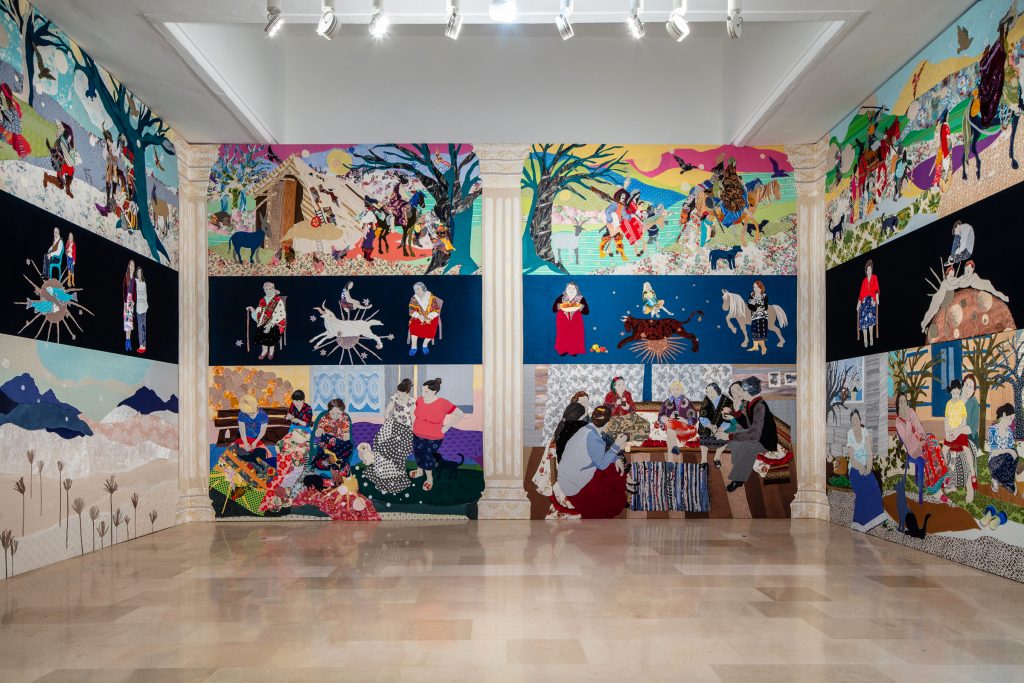 Małgorzata Mirga-Tas, Re-enchanting the World, exhibition view, Polish Pavilion at the Biennale Arte 2022. Photo: Daniel Rumiancew. Images courtesy Zachęta — National Gallery of Art
Małgorzata Mirga-Tas, Re-enchanting the World, exhibition view, Polish Pavilion at the Biennale Arte 2022. Photo: Daniel Rumiancew. Images courtesy Zachęta — National Gallery of Art
Belgium
The Nature of the Game
Curator: Hilde Teerlinck
Exhibitor: Francis Alÿs
Venue: Giardini
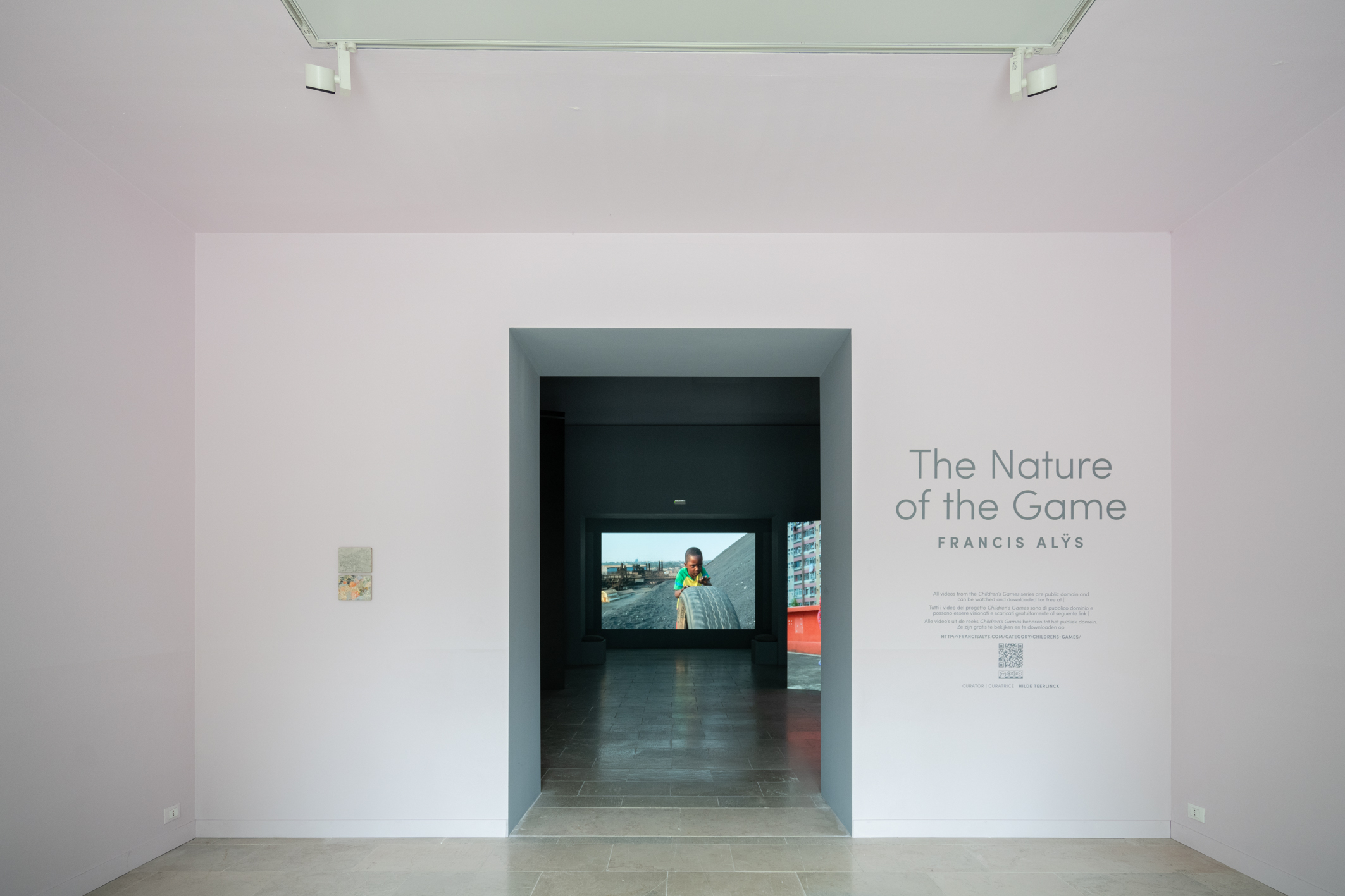
Pavilion of BELGIUM, The Nature of the Game, 59th International Art Exhibition - La Biennale di Venezia, The Milk of Dreams, Photo by Andrea Avezzù, Courtesy: La Biennale di Venezia
For the exhibition in the Belgian Pavilion, Alÿs presents a selection of new short films shot since 2017 in Hong Kong, Democratic Republic of Congo, Belgium, Mexico, to name a few. Filming without interfering in the games, Alÿs reveals the hidden rules of playing, the ingenious interaction of the children with their environment, their deep complicity and their hopeful mood and joy. The installation in the Pavilion invites the visitor to walk through a labyrinth of screens as if they were in the middle of a global playground. The sound and image of the different films interact with each other, fragments forming together a whole, allegories translating the complexity of a sometimes harsh reality.
A series of small paintings covering a period from 1994 to 2021 accompanies the video presentation providing the context in which some of the films were made. From Kabul to Ciudad Juárez, from Jerusalem to Shanghai, they unfold Alÿs’ distinct poetic sensibility towards social and political concerns.
To learn more visit the Belgian Pavilion.
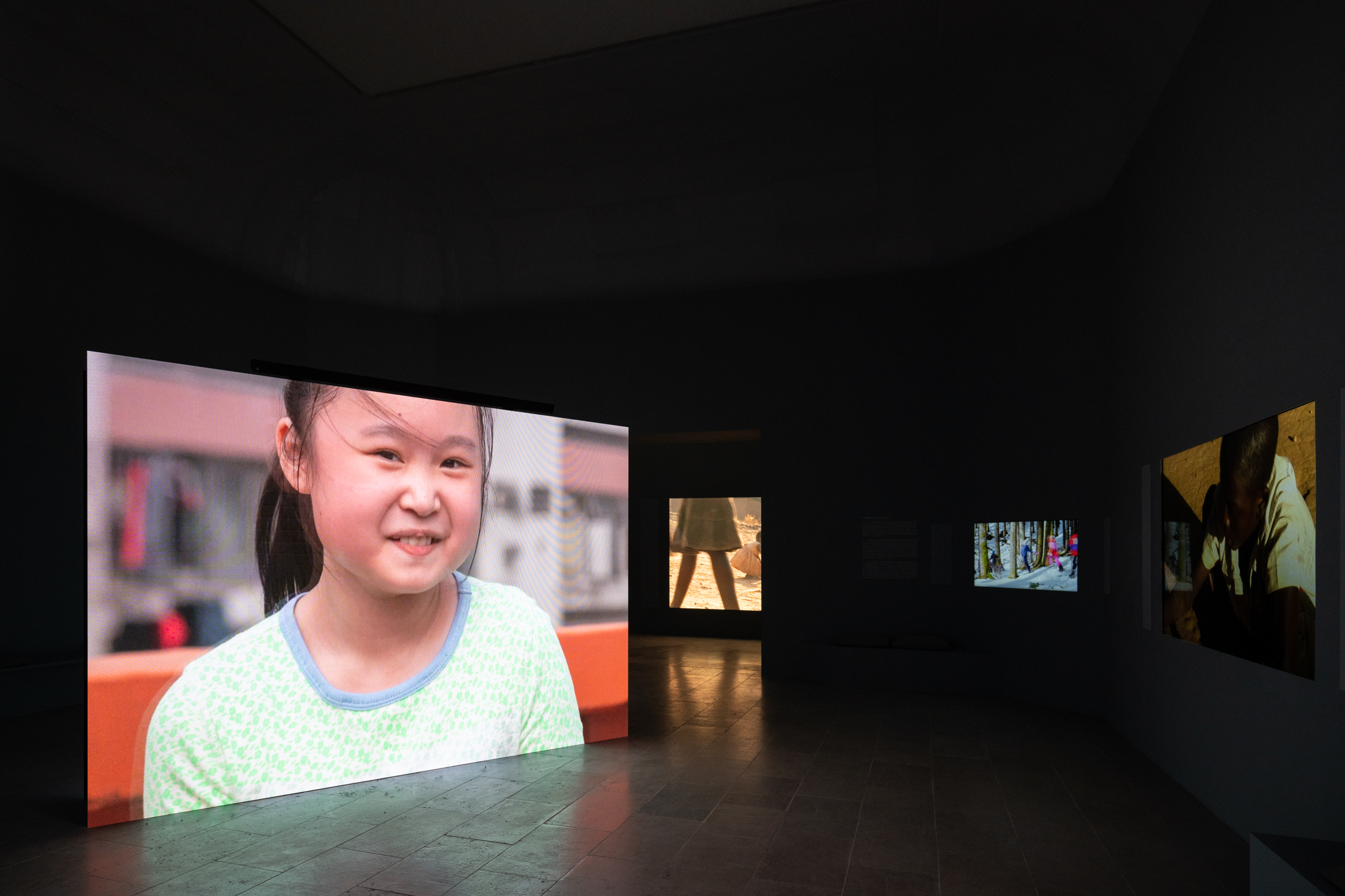 Pavilion of BELGIUM, The Nature of the Game, 59th International Art Exhibition - La Biennale di Venezia, The Milk of Dreams, Photo by Andrea Avezzù, Courtesy: La Biennale di Venezia
Pavilion of BELGIUM, The Nature of the Game, 59th International Art Exhibition - La Biennale di Venezia, The Milk of Dreams, Photo by Andrea Avezzù, Courtesy: La Biennale di Venezia
 Children’s Game #23: Step on a Crack, Hong Kong, 2020, 5’, In collaboration with Félix Blume, Julien Devaux, and Rafael Ortega (© Courtesy the artist). Belgian Pavilion at the Biennale Arte 2022.
Children’s Game #23: Step on a Crack, Hong Kong, 2020, 5’, In collaboration with Félix Blume, Julien Devaux, and Rafael Ortega (© Courtesy the artist). Belgian Pavilion at the Biennale Arte 2022.
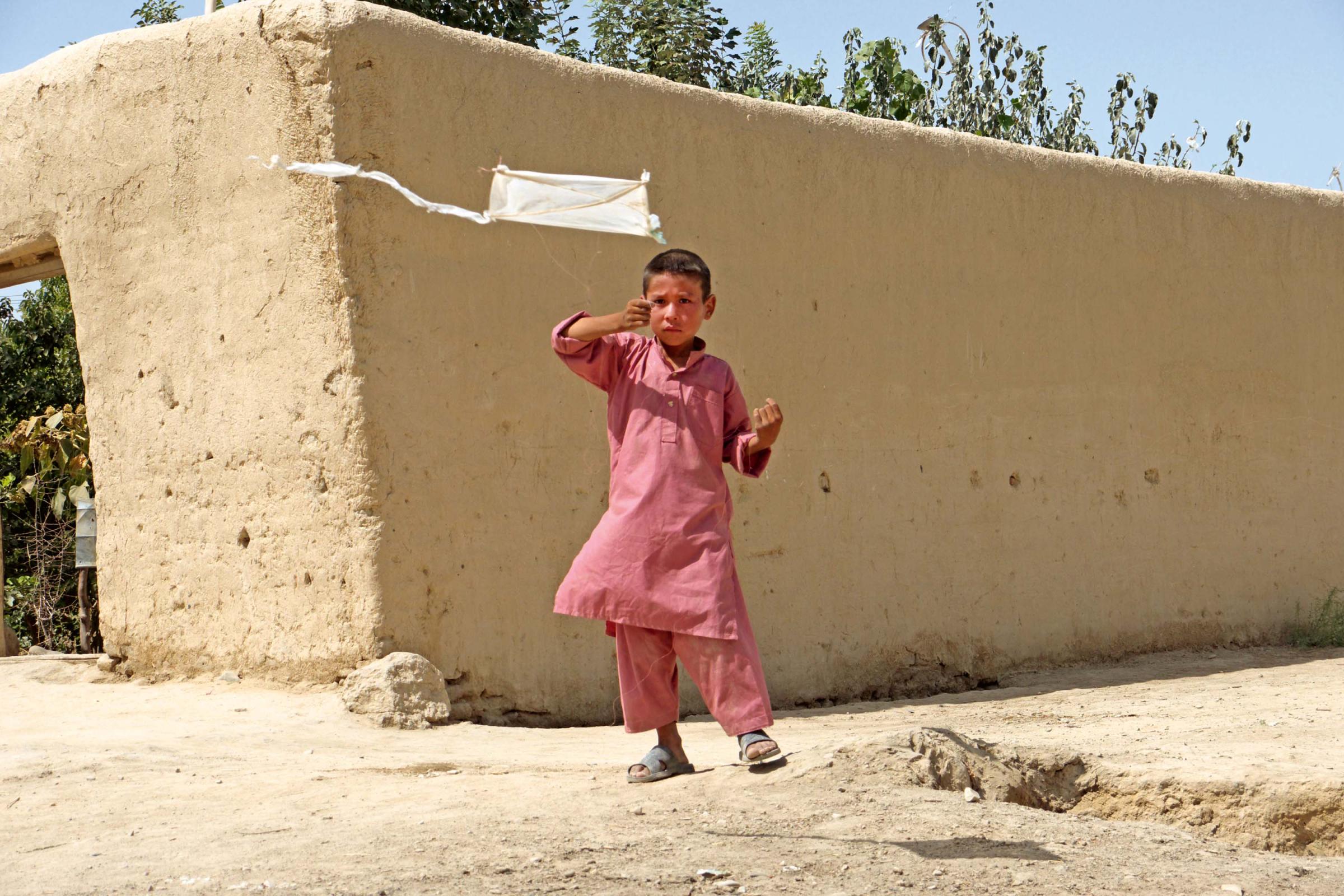 Children’s Game #10: Papalote, Balkh, Afghanistan, 2011, 4’13”, In collaboration with Félix Blume and Elena Pardo (© Courtesy the artist). Belgian Pavilion at the Biennale Arte 2022.
Children’s Game #10: Papalote, Balkh, Afghanistan, 2011, 4’13”, In collaboration with Félix Blume and Elena Pardo (© Courtesy the artist). Belgian Pavilion at the Biennale Arte 2022.
Australia
Marco Fusinato DESASTRES
Curator: Alexie Glass-Kantor
Exhibitor: Marco Fusinato
Venue: Giardini
 Marco Fusinato, DESASTRES, 2022. Solo durational performance as installation, 200 days. Installation view, Australian Pavilion, 59th International Venice Biennale, 2022. Photo: Andrea Rossetti.
Marco Fusinato, DESASTRES, 2022. Solo durational performance as installation, 200 days. Installation view, Australian Pavilion, 59th International Venice Biennale, 2022. Photo: Andrea Rossetti.
Marco Fusinato’s DESASTRES, curated by Alexie Glass-Kantor is an experimental noise project that synchronises sound with image and takes the form of a durational solo performance as installation. Fusinato performed live in the pavilion using an electric guitar as a signal generator into mass amplification to improvise slabs of noise, saturated feedback and discordant intensities that trigger a deluge of images. The resulting all-consuming experience is open for the audience to interpret and make sense of.
Originally from the Veneto region in Italy, Marco Fusinato’s parents migrated to Australia where he was born. He currently lives and works in Naarm/Melbourne. Fusinato is a contemporary artist and noise-musician whose work takes the form of installation, photographic reproduction, design, performance and recording. DESASTRES is a culmination of his interests in noise/experimental music, underground culture, mass media images and art history.
DESASTRES is a visceral experience of sound and image that places the audience at the centre of the work. Fusinato will perform live in the pavilion using an electric guitar as a signal generator into mass amplification to improvise slabs of noise, saturated feedback and discordant intensities that trigger a deluge of images. The resulting all-consuming experience is open for the audience to interpret and make sense of.
To learn more visit the Australian Pavilion.
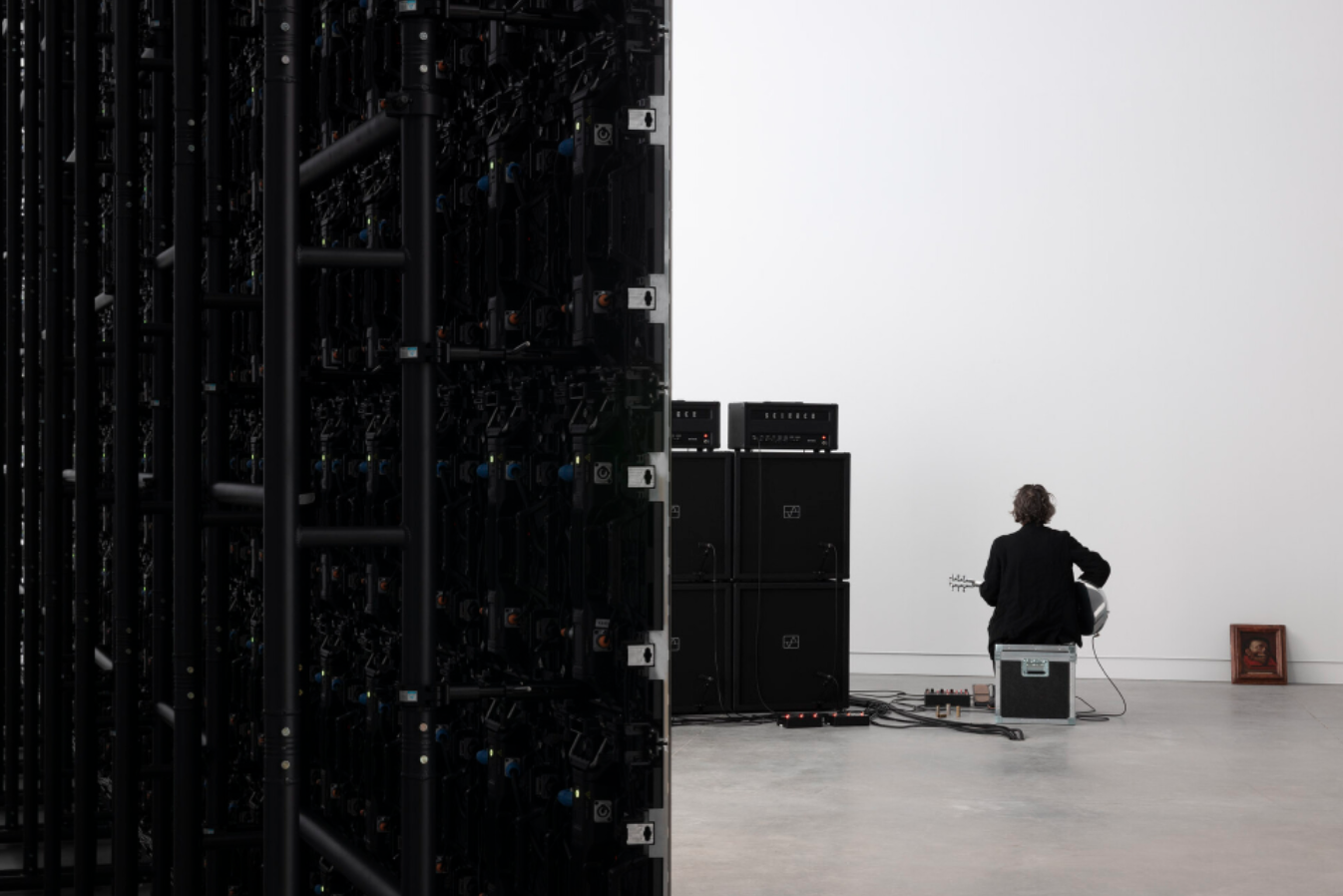 Marco Fusinato, DESASTRES, 2022. Solo durational performance as installation, 200 days. Installation view, Australian Pavilion, 59th International Venice Biennale, 2022. Photo: Andrea Rossetti.
Marco Fusinato, DESASTRES, 2022. Solo durational performance as installation, 200 days. Installation view, Australian Pavilion, 59th International Venice Biennale, 2022. Photo: Andrea Rossetti.
Mexico
Hasta que los cantos broten (Until The Songs Spring)
Curators: Catalina Lozano, Mauricio Marcín
Exhibitors: Mariana Castillo Deball, Naomi Rincón Gallardo, Fernando Palma Rodríguez, Santiago Borja Charles
Venue: Arsenale
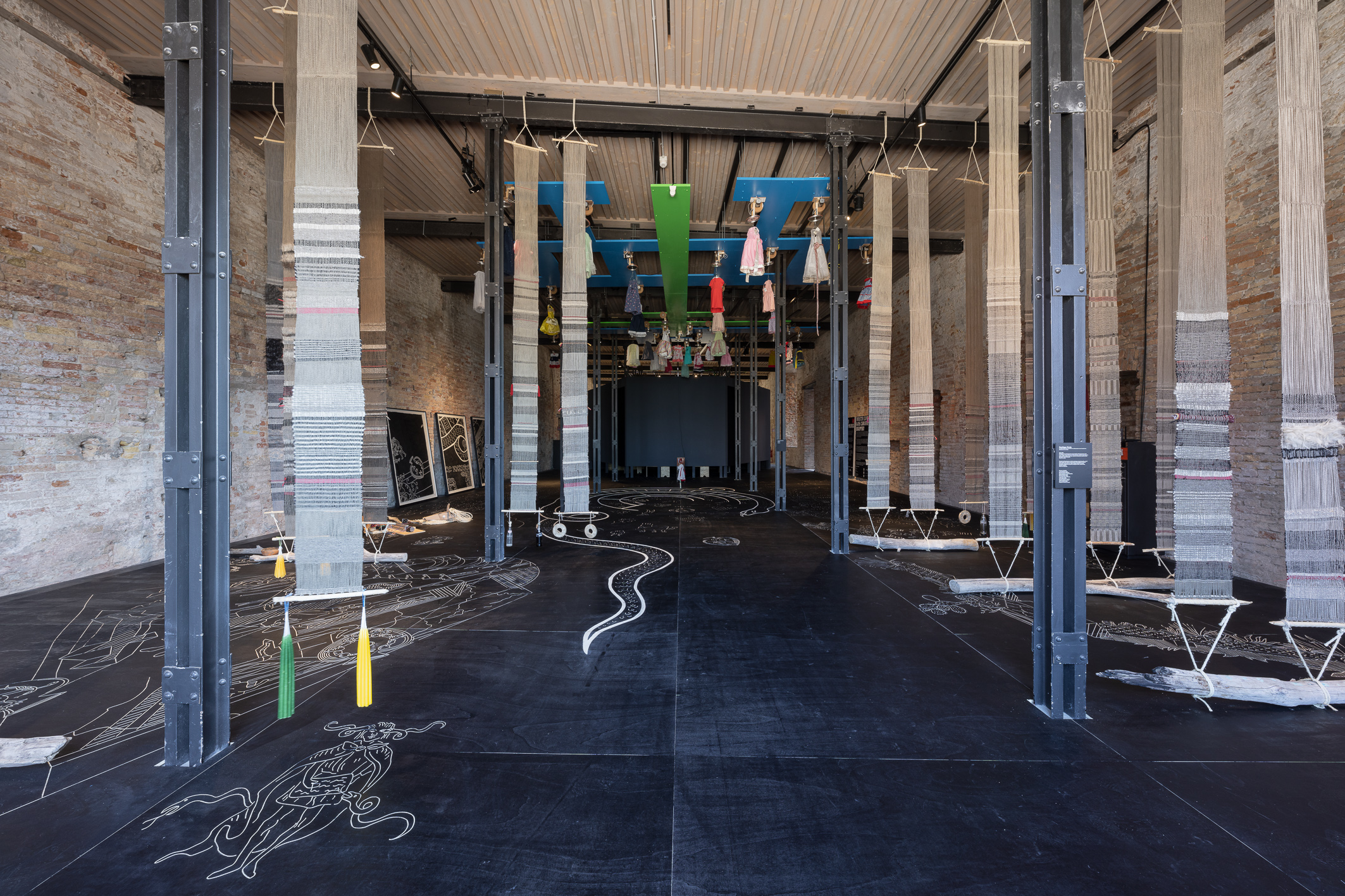 Pavilion of MEXICO, Hasta que los cantos broten (Until The Songs Spring), 59th International Art Exhibition – La Biennale di Venezia, The Milk of Dreams, Photo by Andrea Avezzù, Courtesy: La Biennale di Venezia
Pavilion of MEXICO, Hasta que los cantos broten (Until The Songs Spring), 59th International Art Exhibition – La Biennale di Venezia, The Milk of Dreams, Photo by Andrea Avezzù, Courtesy: La Biennale di Venezia
Until The Songs Spring, the exhibition presented at the Mexican Pavilion as part of the 59th International Art Exhibition at Venice Biennial, looks at the ways in which artists from different generations -Mariana Castillo Deball, Naomi Rincón Gallardo, Fernando Palma Rodríguez and Santiago Borja, approach forms of knowledge that have not been fully colonized by the dominant modern system of knowledge, affirming opposite and alternative ways of life to counteract an anthropocentric vision which has been modeled by an univocal principle of progress.
It is about constructing a more democratic and egalitarian reality moved by different technologies that do not partake in the productive machinery of capitalism, seeking to re-enchant a world that coloniality and modernity desecrated.
To learn more visit the Mexican Pavilion.
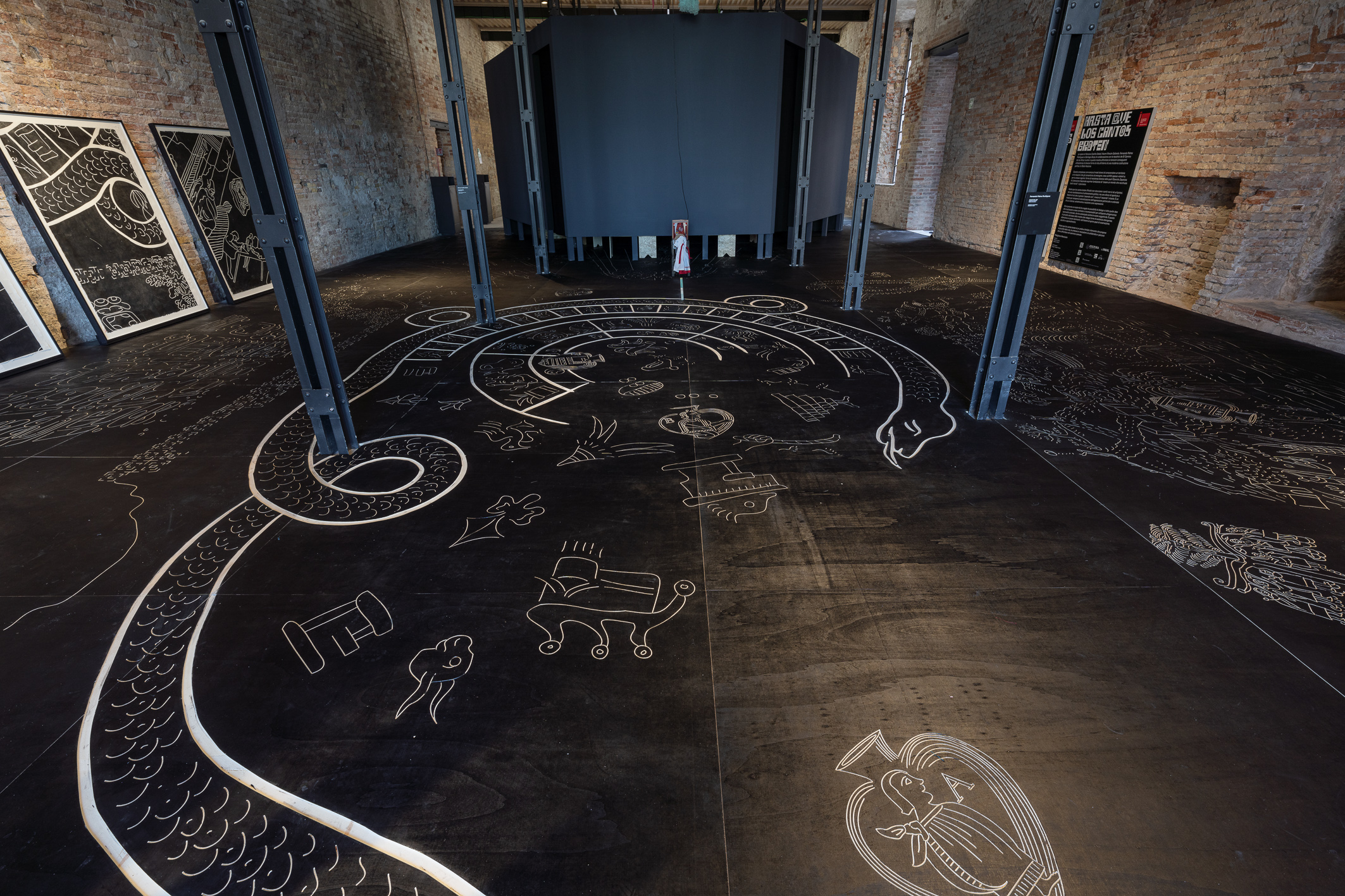 Pavilion of MEXICO, Hasta que los cantos broten (Until The Songs Spring), 59th International Art Exhibition – La Biennale di Venezia, The Milk of Dreams, Photo by Andrea Avezzù, Courtesy: La Biennale di Venezia
Pavilion of MEXICO, Hasta que los cantos broten (Until The Songs Spring), 59th International Art Exhibition – La Biennale di Venezia, The Milk of Dreams, Photo by Andrea Avezzù, Courtesy: La Biennale di Venezia
Ghana
Black Star - The Museum as Freedom
Curator: Nana Oforiatta Ayim
Exhibitors: Na Chainkua Reindorf, Diego Araúja, Afroscope
Venue: Arsenale
 Pavilion of Ghana, Black Star - The Museum as Freedom, 59th International Art Exhibition – La Biennale di Venezia, The Milk of Dreams
Pavilion of Ghana, Black Star - The Museum as Freedom, 59th International Art Exhibition – La Biennale di Venezia, The Milk of Dreams
Ghana presents the exhibition “Black Star – The Museum as Freedom“, featuring artists Na Chainkua Reindorf, Afroscope and Diego Araúja. The title stands for the black star from Ghana flag, but also represent Africa’s connection with its diasporas through Marcus Garvey’s “Black Star Line” and his Back-to-Africa movement revived now in Ghana; as well as for Pan-Africanism and anti-colonialism with the symbol described as the “Lodestar of African Freedom”.
The Ghana pavilion, with the contribution of architect DK Osseo-Asare, explores the concept of this freedom across time and borders. The exhibition is based on curator Nana Oforiatta Ayim’s concept of the “Mobile Museum”, which travels into communities across Ghana in co-curation and exchange, with the aim of creating accessible, contextual, inclusive spaces.
Na Chainkua Reindorf creates her own mythology of Mawu Nyonu, a fictional secret society made of seven women. Afroscope explore the concept on “oneness” – being one – with “Ashe”, a work based on a spirit that runs through all the elements using technology as a translator of the flow of life. Diego Araúja presents “A Congress of Salt“, in which the Atlantic Ocean, that served to separate those taken from the shores of West Africa to its diasporas, now acts as a unifier, the birthplace of a new creole.
To learn more visit the Ghanaian Pavilion.
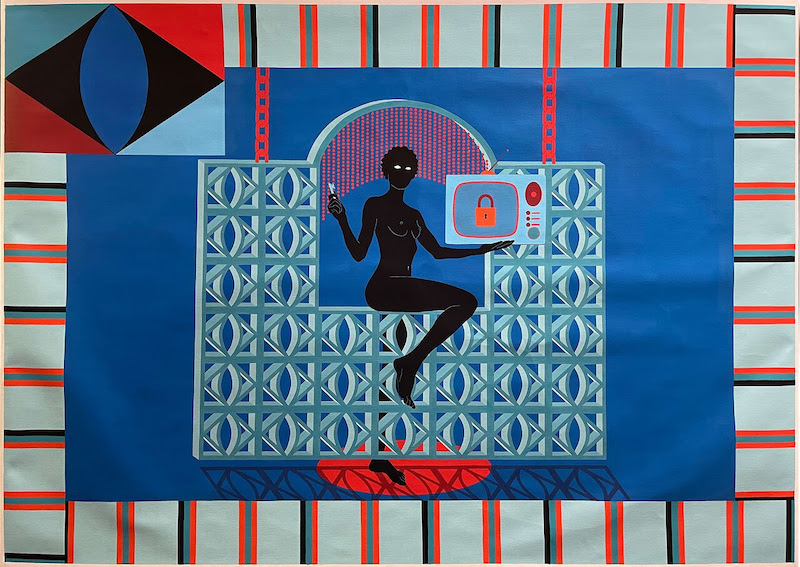
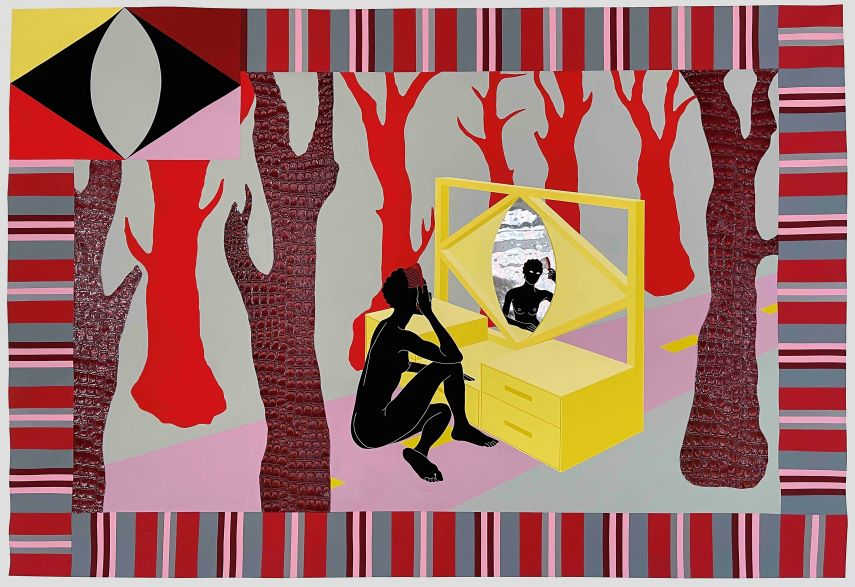 Pavilion of Ghana, Black Star - The Museum as Freedom, 59th International Art Exhibition – La Biennale di Venezia, The Milk of Dreams
Pavilion of Ghana, Black Star - The Museum as Freedom, 59th International Art Exhibition – La Biennale di Venezia, The Milk of Dreams
New Zealand
Paradise Camp
Curator: Natalie King
Exhibitor: Yuki Kihara
Venue: Arsenale
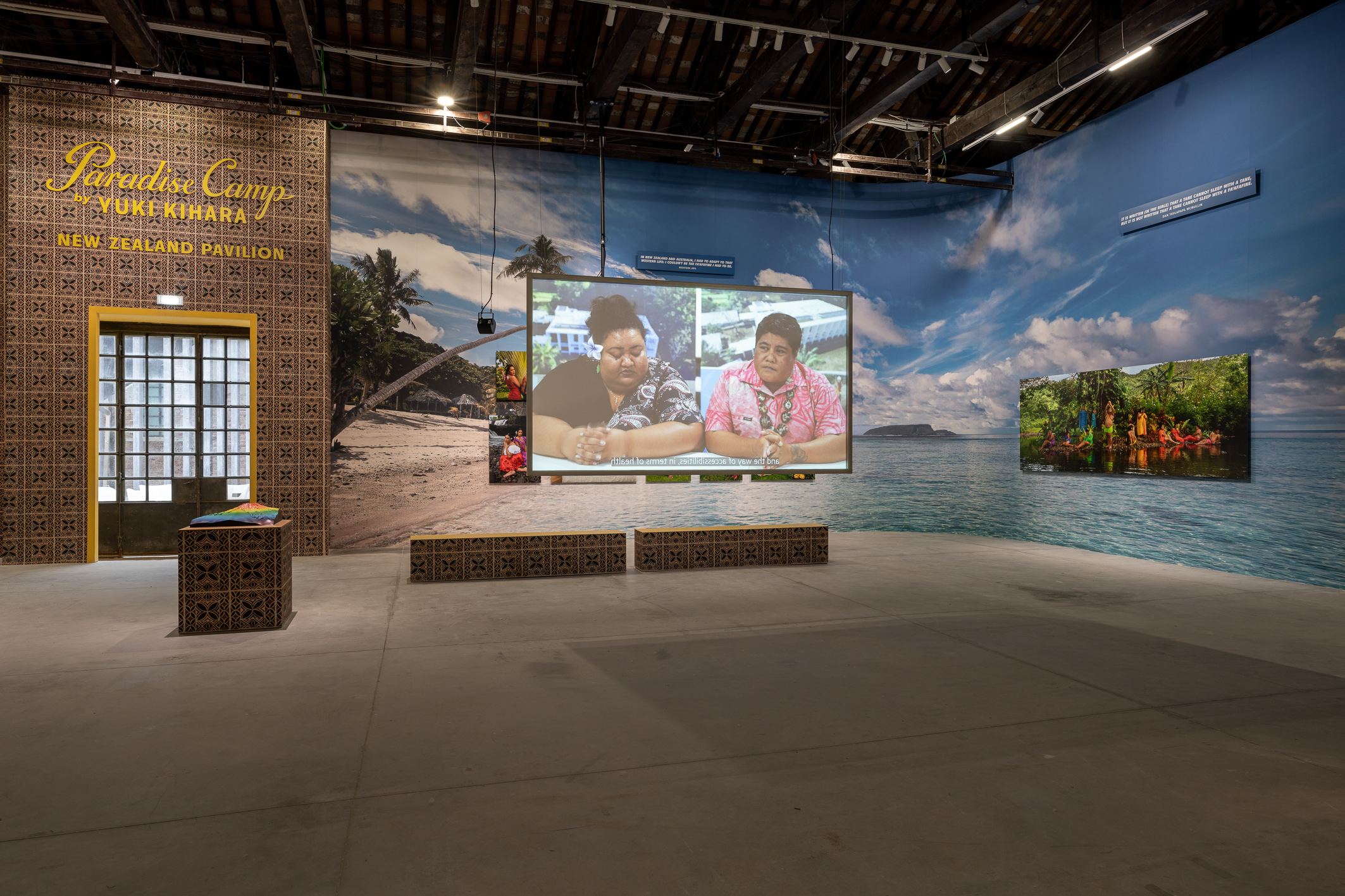 Pavilion of NEW ZEALAND, Paradise Camp, 59th International Art Exhibition – La Biennale di Venezia, The Milk of Dreams, Photo by Andrea Avezzù, Courtesy: La Biennale di Venezia
Pavilion of NEW ZEALAND, Paradise Camp, 59th International Art Exhibition – La Biennale di Venezia, The Milk of Dreams, Photo by Andrea Avezzù, Courtesy: La Biennale di Venezia
Paradise Camp comprises a suite of twelve tableau photographs in saturated colour, situated against a vast wallpaper of a landscape decimated by the 2009 tsunami. Eleven of the works were shot on location in Sāmoa, from rural villages to churches, plantations and heritage sites, with a local cast and crew of over eighty people.
Kihara’s performative photography upcycles select paintings by post-impressionist French artist Paul Gauguin in a suite of images that repurpose his paintings created during his time in the Islands of Tahiti and the Marquesas between 1891 and 1903. Kihara problematises Gauguin’s outsized legacy by re-enacting his paintings back in the Pacific, paying careful attention to the details of his works. These re-enactments instill a Polynesian inflection to each photograph and are based on strong personal relationships with Kihara’s sitters, all of whom are part of the Fa‘afafine and Fa‘atama communities. Kihara works with these models to represent her own vision of Paradise, redirecting the viewer to the concerns of contemporary Pacific Islanders and ‘returning the gaze’ in a profound gesture of empowerment.
In one photograph within the suite, Kihara casts herself as Gauguin in Paul Gauguin with a hat (After Gauguin). Through this ingenious role reversal, Kihara commands her own space within the traditions of art history while upending the conventions of portraiture itself.
To learn more visit the New Zealand Pavilion.

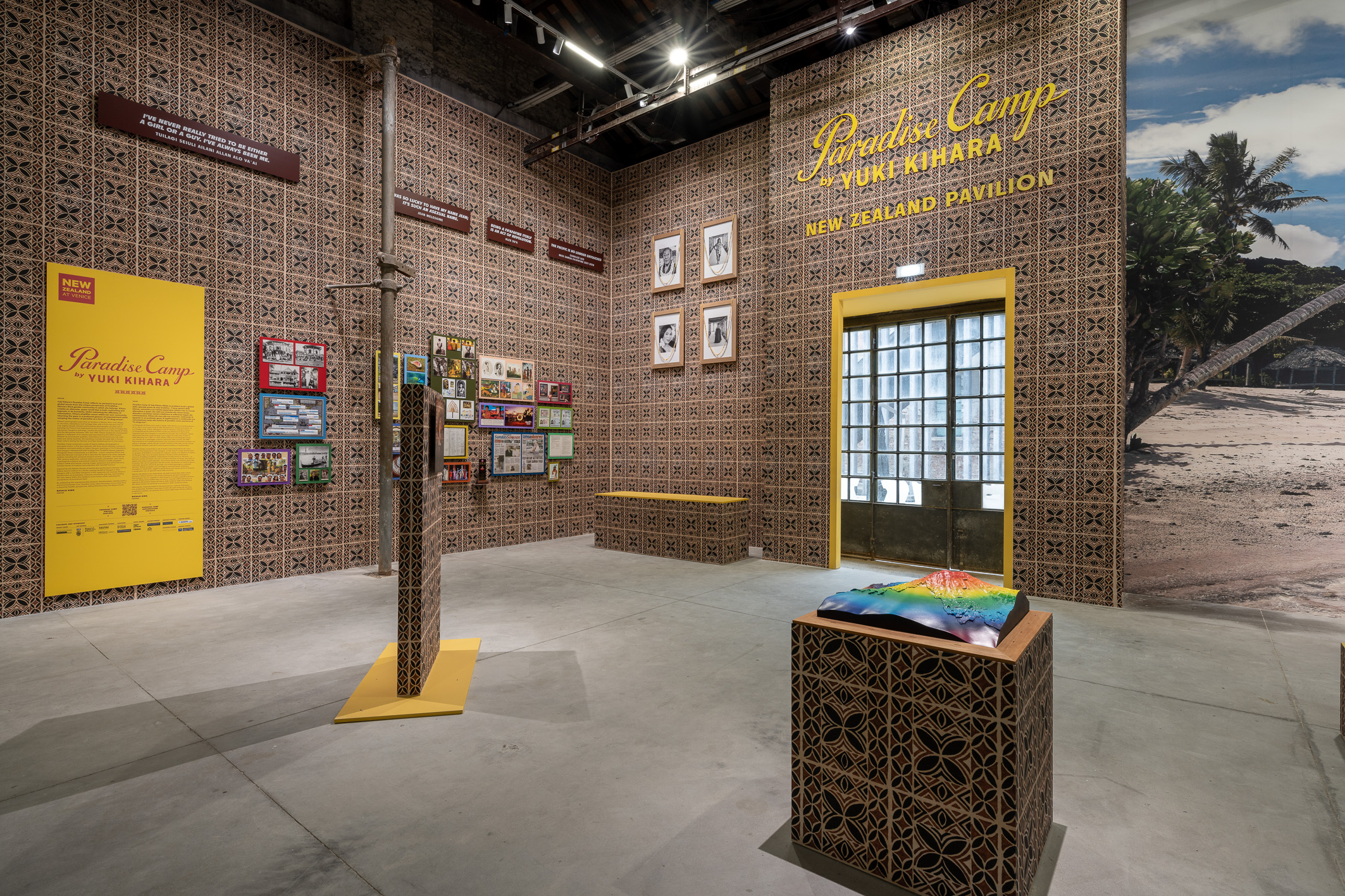 Pavilion of NEW ZEALAND, Paradise Camp, 59th International Art Exhibition – La Biennale di Venezia, The Milk of Dreams, Photo by Andrea Avezzù, Courtesy: La Biennale di Venezia
Pavilion of NEW ZEALAND, Paradise Camp, 59th International Art Exhibition – La Biennale di Venezia, The Milk of Dreams, Photo by Andrea Avezzù, Courtesy: La Biennale di Venezia
Zimbabwe
I did not leave a sign?
Curated by Fadzai Veronica Muchemwa
Exhibitors: Wallen Mapondera, Ronald Muchatuta, Kresiah Mukwazhi, Terrence Musekiwa
Venue: Chiesa Santa Maria della Pietà, Calle della Pietà
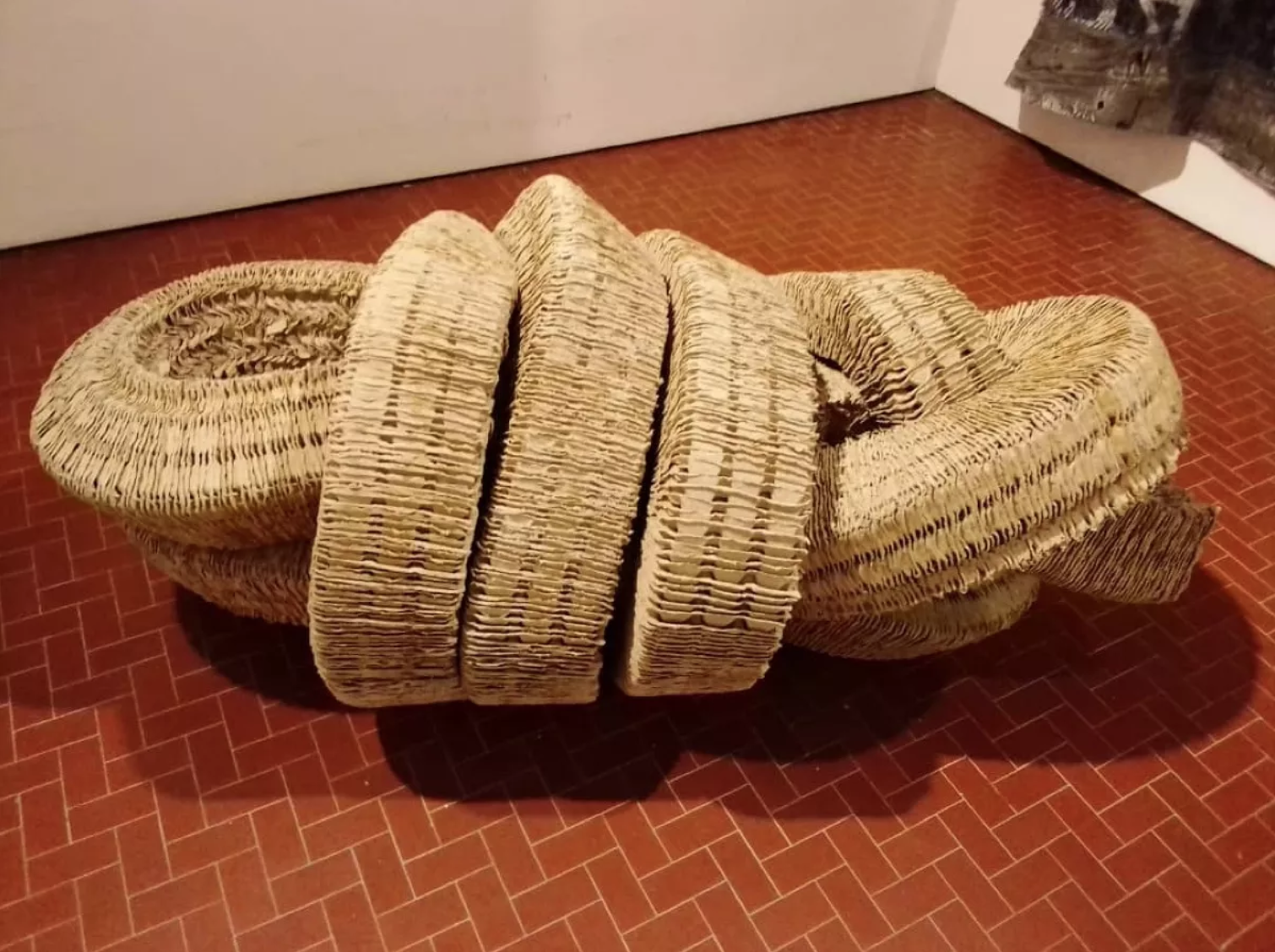 Installation view of Wallen Mapondera, Chisungo, 2021, in “I Did Not Leave a Sign,” for the Zimbabwe Pavilion at the Venice Biennale, 2022. © Wallen Mapondera. Courtesy of the artist; National Gallery of Zimbabwe.
Installation view of Wallen Mapondera, Chisungo, 2021, in “I Did Not Leave a Sign,” for the Zimbabwe Pavilion at the Venice Biennale, 2022. © Wallen Mapondera. Courtesy of the artist; National Gallery of Zimbabwe.
"I did not leave a sign?" seeks to embrace different realms of knowledge and ways of knowing; recalling scientific and technical minds who rebelled against the cultic centres of faith, and brought in a new age through remembering how the twentieth-century disaster demonstrated that science and technology are not infallible, after all, and that modern faith in the objective ideal was an illusion. The osmosed worlds of reality and technology in the face of new technological innovations, juxtaposed with the ubiquity of mortality in the face of a Global Pandemic, are ever eviscerated through the exhibiting quartet’s expressions.
The exhibition will have highly amphibious perspectives; tales of the dispersion, migration and the animated livelihood of being Zimbabwean while governed by invisible threats take center stage in this exposition. — Fadzai Veronica Muchemwa, Curator
Learn more about the Zimbabwean Pavilion.
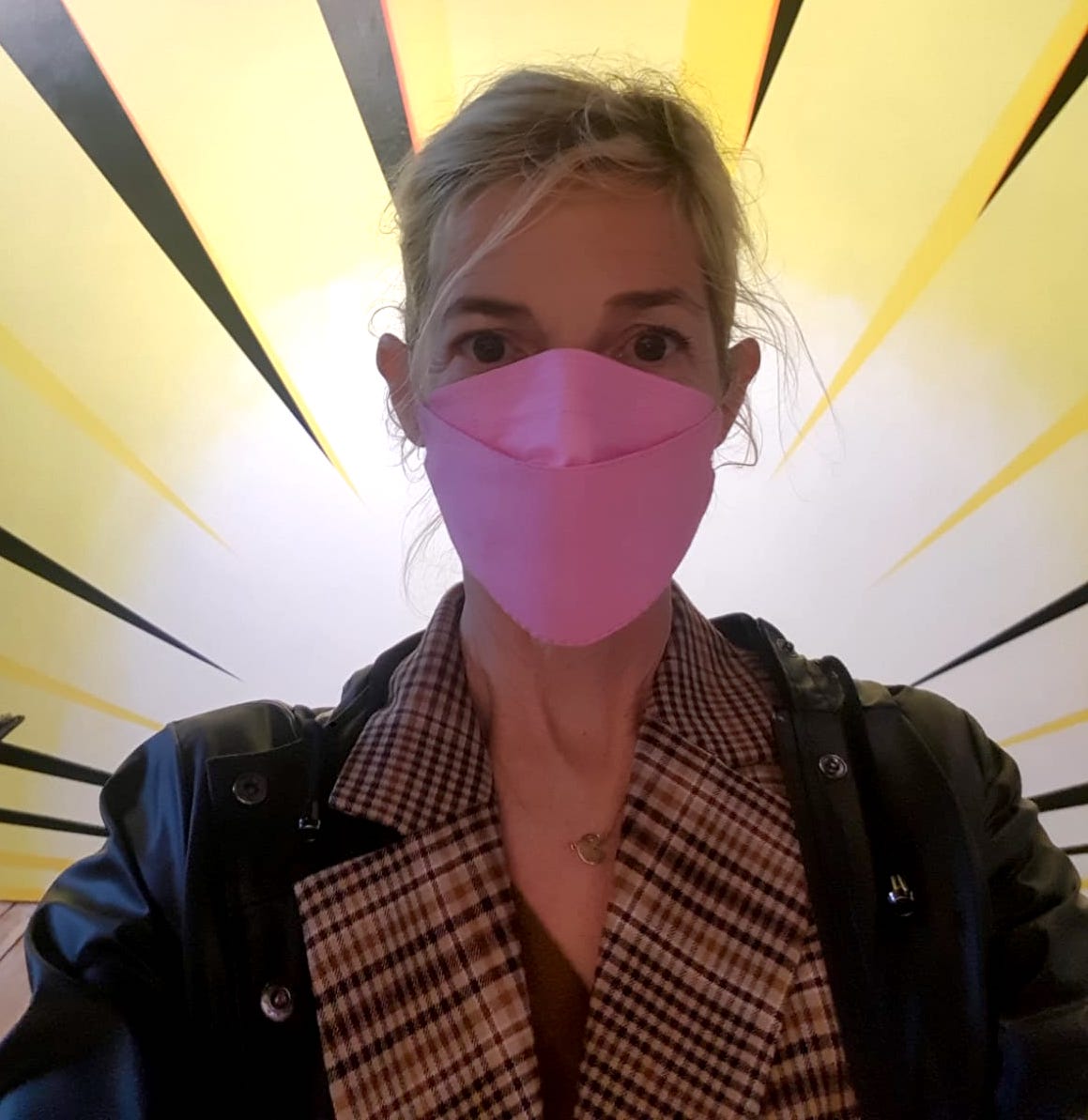 Alexia Walker pictured at Tina Gillen's exhibition "Faraway So Close" at The Luxembourg Pavilion, 59th Venice Biennale 2022.
Alexia Walker pictured at Tina Gillen's exhibition "Faraway So Close" at The Luxembourg Pavilion, 59th Venice Biennale 2022.
Read more about Venice Biennale
Further Reading In Articles
African Artist Directory















